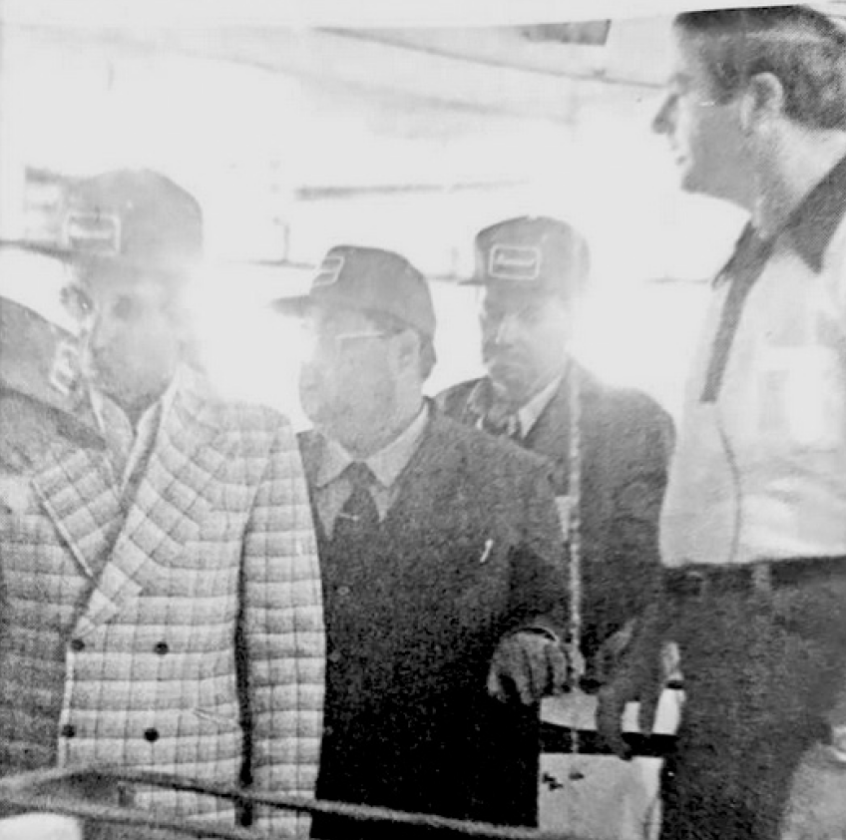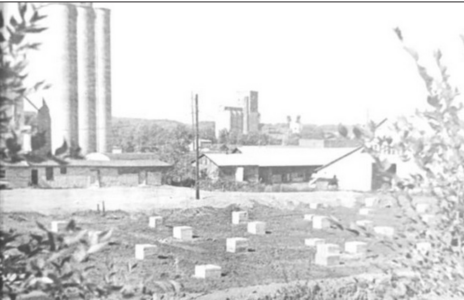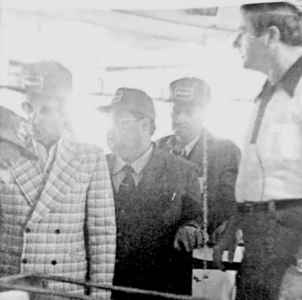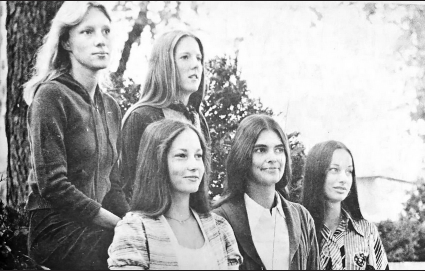Minnesota soybeans lure Brazilians

ED DRILL, far right, Supersweet farm manager,address the Brazilian farmers in German during the tour. (Photo by Gary Lee)
COURTLAND — Brazilians? In Courtland?
Yes, 41 of them, in fact. They toured the Supersweet research farm Friday.
“We have come to learn about our job. We are farmers,” said one man in the group.
Ed Drill, farm manager in Courtland, gave them a tour of the livestock and poultry units, speaking in German to a translator who addressed the group in Portuguese.
This was the second time farmers from Rio Grande Do Sul, the southernmost state of Brazil, have visited Supersweet at Courtland. Last year 140 took in Supersweet as part of a month-long look at the United States.
Of this year’s group, only the tour leader, Jose Antonio Ceasar, of San Paolo, was a repeater.
A SURPRISING FACT of the remote land below the equator they come from is that many German, Italian and Polish people have immigrated there in the past century and a half, since the borders were opened in 1824.
The group was interested to learn of the German heritage of New Ulm, but that was not what attracted them to Courtland and to Restaurant Eibner in New Ulm. After the tour they retired for lunch and homemade entertainment at Eibner’s, with one of the group playing German music on his guitar and harmonica.
What did attract them to southern Minnesota was the soybean crop. Brazil is the world’s second largest exporter of soybeans at 10 million metric tons compared to the United States 39 million.
Being in the Southern Hemisphere, Brazil’s seasons are topsy-turvey from ours. The seasons are moving into summer there now, and back on their farms the Brazilians said they are finishing up the soybean marketing and sowing wheat.
AS AMERICANS are welI aware, Brazilian coffee froze this year making Columbia the leading coffee exporter and immediately boosting the price to U.S. consumers. This despite the fact that it is generally warmer in Brazil than here,although there are four seasons in the south and snow is not unknown.
No coffee grows on the plains of Rio Grande, nor any corn. Soy, wheat and some cattle are the main products of their farms, which average four to five hundred acres and are highly mechanized.
Cooperation is a way of life. There are 150,000 members of co-ops in Rio Grande alone, they said and the cooperative they represent has eleven thousand.
The Cotrisa Co-op they belong to paid the way for some of the members of the tour; others paid their own way. There is only one woman with the group, one of the farmer’s wives, and there is one agricultural journalist, Silmar Muller, of German descent.
Muller specializes in agricultural reporting for a newspaper of about 100,000 circulation in Porto Alegre, the capital of Rio Grande. He mentioned that although Brazil has a parliamentary form of constitutional government, permission must be obtained from the government to publish a newspaper, and censorship of Communist newspapers is common.
Since landing in Miami Sept. 13, the group has been on a whirlwind schedule including Atlanta, Washington, D.C., New York City, Chicago, outstate Illinois, and Minnesota.
Their tour of Supersweet was only their second farm stop; they began their agricultural inspection at Cargill in Minneapolis Thursday.
The group spent Friday night in Mankato, then will tour DeKalb in Illinois and return to Chicago. Then they travel to Dallas, visit Disney World in Orlando, and fly back to Brazil Oct. 13.
New Ulm Daily Journal
Sept. 28, 197



